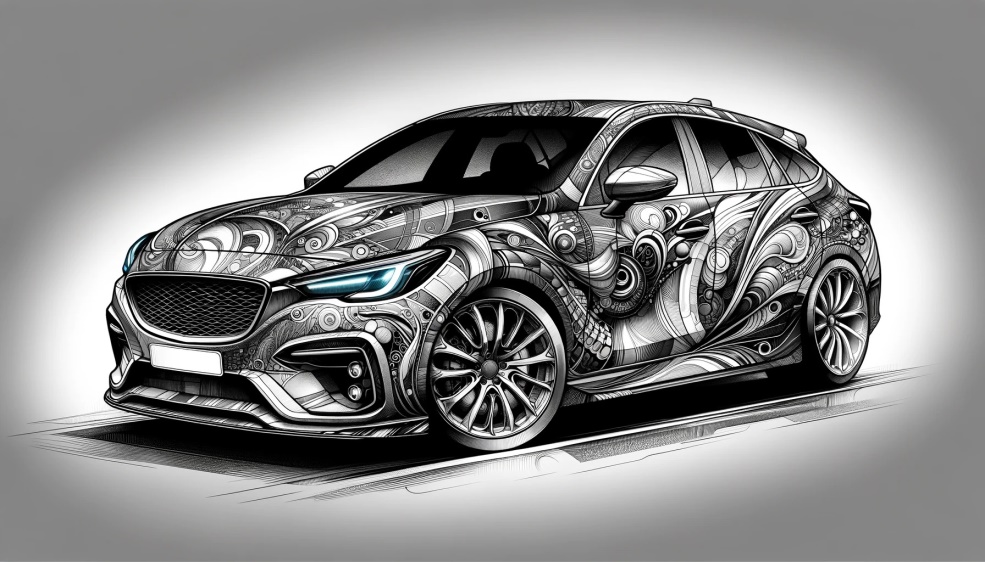Introduction
Car sketching is an essential skill for automotive designers and enthusiasts alike. It’s a form of art that requires a unique blend of creativity, technical understanding, and attention to detail. Whether you’re a budding designer aspiring to break into the automotive industry or simply a car enthusiast who enjoys drawing, mastering car sketching can be both rewarding and enjoyable. This guide will walk you through the basics of Easy:burmhcczepe Car Sketch, providing tips and techniques to help you create stunning and accurate car sketches with ease.
Understanding the Basics of Car Sketching
The Importance of Proportions
One of the most critical aspects of car sketching is getting the proportions right. Proportions refer to the relative size and placement of different parts of the car, such as the wheels, body, and windows. Proper proportions ensure that your sketch looks realistic and balanced. A common mistake beginners make is drawing the wheels too small or the car body too long. To avoid this, start by lightly sketching the basic shapes of the car, such as the rectangles for the body and circles for the wheels. This will help you visualize the overall proportions before adding details.
Perspective and Angle
Understanding perspective is crucial in car sketching. Perspective refers to the way objects appear smaller as they recede into the distance. When sketching a car, the perspective will determine how the different parts of the car relate to each other in terms of size and position. For example, when sketching a car in a three-quarter view (where the front and side of the car are both visible), the front of the car will appear larger than the back. Practicing perspective drawing with simple shapes like cubes and cylinders can help you develop a better understanding of how to apply it to car sketching.
Lines and Shapes
Car sketches are made up of a series of lines and shapes that come together to form the overall design. Start by sketching basic shapes to represent the car’s body, such as rectangles, ovals, and circles. These shapes will serve as the foundation of your sketch. Once the basic shapes are in place, you can begin refining the lines to create the car’s contours and features. Pay attention to the curvature of the car’s body, the slope of the roof, and the angles of the windows. Use smooth, confident lines to outline the car’s design, and don’t be afraid to erase and redraw lines as needed.
Step-by-Step Guide to Sketching a Car
Step 1: Gather Your Materials
Before you begin sketching, gather the necessary materials. You’ll need a pencil, eraser, paper, and a ruler. You may also want to use a fine-tipped pen or marker for adding final details and shading. If you’re using digital tools, make sure you have a drawing tablet and stylus.
Step 2: Choose Your Viewpoint
Decide on the angle from which you want to sketch the car. Common viewpoints include the side view, front view, and three-quarter view. The three-quarter view is the most popular choice for car sketches as it shows the car’s front, side, and roof, giving a more dynamic and complete representation of the vehicle.
Step 3: Sketch the Basic Shapes
Begin by lightly sketching the basic shapes that make up the car’s body. For a three-quarter view, start with a rectangle to represent the main body of the car. Add two circles where the wheels will be, ensuring they are proportionate to the body. Use ovals or rectangles to outline the roof and windows. This initial sketch should be simple and free of details; its primary purpose is to establish the car’s proportions and perspective.
Step 4: Refine the Outline
Once you’re satisfied with the basic shapes, start refining the outline of the car. Add curves to the roofline, define the shape of the windows, and outline the wheel arches. At this stage, focus on the car’s overall silhouette and how the different parts of the car flow together. Pay attention to the car’s design features, such as the slope of the hood, the angle of the windshield, and the shape of the headlights. Use smooth, continuous lines to create a clean and polished outline.
Step 5: Add Details
Now that the outline is complete, it’s time to add details to your sketch. Start by sketching the car’s wheels, making sure they are properly aligned and proportionate to the body. Add details to the headlights, grille, and side mirrors. Draw the car’s door handles, side skirts, and other design elements. If you’re sketching a specific car model, pay close attention to its unique features and incorporate them into your sketch. The more details you add, the more realistic your sketch will appear.
Step 6: Shading and Highlights
Shading is an important aspect of car sketching as it adds depth and dimension to your drawing. Determine the light source in your sketch and add shading accordingly. Use hatching (a series of parallel lines) or cross-hatching (intersecting lines) to create shadows on the car’s body, under the wheels, and in other areas where light is blocked. Add highlights by leaving certain areas of the car’s body unshaded or by using a lighter touch with your pencil. Highlights typically appear on the roof, hood, and other raised surfaces that catch the light.
Step 7: Final Touches
Review your sketch and make any final adjustments or additions. Darken the lines of the car’s outline to make them stand out, and erase any unnecessary marks or construction lines. If you’re using a pen or marker, go over the final lines to give your sketch a clean and finished look. You can also add background elements, such as a road or a simple horizon line, to place your car in context.
Tips for Improving Your Car Sketching Skills
Practice Regularly
Like any skill, car sketching improves with practice. Set aside time each day or week to work on your sketches. Start with simple designs and gradually work your way up to more complex car models. As you practice, you’ll develop a better understanding of proportions, perspective, and the intricacies of car design.
Study Real Cars
Spend time studying real cars, either in person or through photographs. Pay attention to how light interacts with different surfaces, the way shadows are cast, and the details that make each car unique. Try sketching different car models from various angles to challenge yourself and expand your skill set.
Experiment with Different Styles
Car sketching doesn’t have to be limited to realistic designs. Experiment with different styles, such as cartoonish or exaggerated car sketches, to discover new ways of expressing your creativity. Playing with proportions, adding bold lines, or incorporating vibrant colors can make your sketches more dynamic and visually striking.
Conclusion
Car sketching is a rewarding and creative skill that can be mastered with practice and patience. By understanding the basics of proportions, perspective, and line work, you can create stunning and accurate car sketches that capture the essence of automotive design. Whether you’re sketching for fun or aspiring to a career in automotive design, the tips and techniques outlined in this guide will help you on your journey to becoming a skilled car sketch artist.

